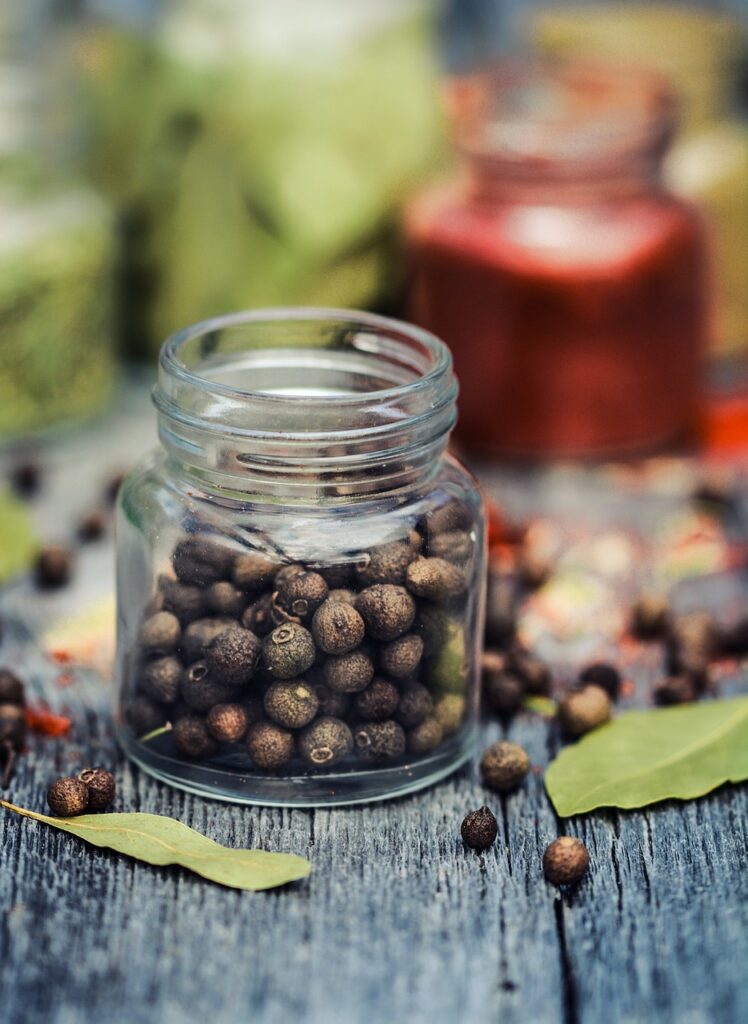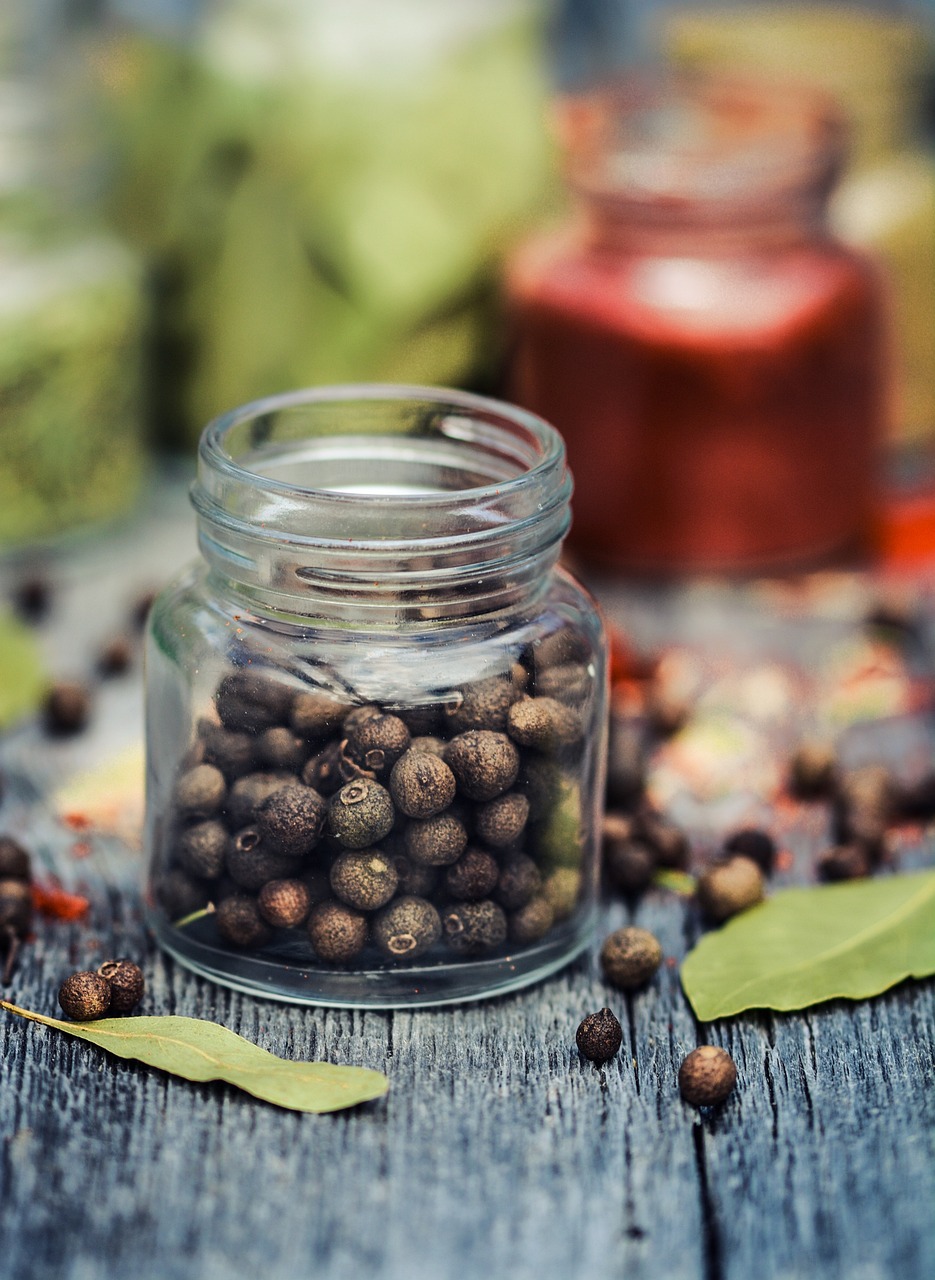
When it comes to spices, most of us think of flavoring our favorite dishes. But did you know that some spices can also be powerful allies for your health? One such spice is allspice, a versatile and aromatic ingredient that has been used for centuries not only in cooking but also in traditional medicine. Today, we’re diving into the fascinating world of allspice and exploring how it can help combat two common health concerns: high blood pressure and menopause-related issues.
If you’ve ever wondered how a simple spice can make such a big difference, you’re in the right place. We’ll also be referencing insights from the book Healing Spice by Bharat B. Aggarwal, which delves into the science behind the health benefits of various spices, including allspice. So, grab a cup of tea, sit back, and let’s explore the wonders of allspice together!
What Is Allspice?
Before we get into the health benefits, let’s start with the basics. Allspice is a spice made from the dried berries of the Pimenta dioica tree, which is native to Central America and the Caribbean. Despite its name, allspice isn’t a blend of spices—it’s a single spice that got its name because its flavor resembles a combination of cinnamon, cloves, and nutmeg.
If you’re looking to harness the blood pressure-lowering benefits of allspice, here are a few easy ways to add it to your diet:
- Use it as a seasoning for roasted vegetables or meats.
- Sprinkle allspice on oatmeal or yogurt for a warming breakfast.
- Brew a cup of allspice tea by steeping crushed allspice berries in hot water.
Allspice has been used for centuries in traditional medicine to treat a variety of ailments, from digestive issues to muscle pain. It’s also a staple in many cuisines, adding warmth and depth to dishes like jerk chicken, stews, and desserts. But beyond its culinary uses, allspice is packed with compounds that can benefit your health in surprising ways.
Allspice and High Blood Pressure: A Natural Remedy
High blood pressure, or hypertension, is a common health issue that affects millions of people worldwide. If left unchecked, it can lead to serious complications like heart disease, stroke, and kidney problems. While medication and lifestyle changes are often recommended to manage high blood pressure, certain spices like allspice can also play a supportive role.
How Allspice Helps Lower Blood Pressure
- Rich in Antioxidants
Allspice is loaded with antioxidants, particularly quercetin and eugenol, which help combat oxidative stress in the body. Oxidative stress is a key contributor to high blood pressure because it damages blood vessels and reduces their ability to relax. By neutralizing free radicals, allspice helps protect your cardiovascular system and promotes healthy blood flow. - Anti-Inflammatory Properties
Chronic inflammation is another factor that can contribute to high blood pressure. Allspice contains compounds that have potent anti-inflammatory effects, helping to reduce inflammation in the blood vessels and improve overall heart health. - Vasodilatory Effects
Some studies suggest that the eugenol in allspice may help relax blood vessels, allowing blood to flow more easily and reducing pressure on the arterial walls. This vasodilatory effect can be particularly beneficial for those with hypertension. - Supports Healthy Circulation
Allspice is also known to improve circulation, which is essential for maintaining healthy blood pressure levels. Better circulation means your heart doesn’t have to work as hard to pump blood throughout your body.
How to Incorporate Allspice for Blood Pressure Management
Remember, while allspice can be a helpful addition to your diet, it’s not a substitute for medical treatment. Always consult your healthcare provider if you’re dealing with high blood pressure.
Allspice and Menopause: A Natural Solution for Hormonal Changes
Menopause is a natural phase of life, but it can come with a host of uncomfortable symptoms, from hot flashes and night sweats to mood swings and weight gain. While hormone replacement therapy (HRT) is a common treatment, many women are turning to natural remedies like allspice to manage their symptoms.
How Allspice Helps with Menopause Symptoms
- Balances Hormones
Allspice contains phytoestrogens, which are plant-based compounds that mimic estrogen in the body. During menopause, estrogen levels drop, leading to many of the symptoms women experience. Phytoestrogens can help balance hormones and alleviate some of these issues. - Reduces Hot Flashes
Hot flashes are one of the most common and bothersome symptoms of menopause. The eugenol in allspice has a cooling effect on the body, which can help reduce the frequency and intensity of hot flashes. - Improves Mood and Reduces Anxiety
Menopause can take a toll on mental health, leading to mood swings, anxiety, and even depression. Allspice has calming properties that can help stabilize mood and promote a sense of well-being. - Supports Bone Health
As estrogen levels decline during menopause, women are at a higher risk of developing osteoporosis. Allspice is rich in minerals like calcium and magnesium, which are essential for maintaining strong bones. - Aids in Weight Management
Weight gain is another common issue during menopause. Allspice can help boost metabolism and support healthy digestion, making it easier to maintain a healthy weight.
How to Use Allspice for Menopause Relief
Here are some simple ways to incorporate allspice into your routine to help manage menopause symptoms:
- Add a pinch of allspice to smoothies or herbal teas.
- Use it in baking—think allspice-infused muffins, pies or cookies.
- Create a relaxing allspice bath by adding a few drops of allspice essential oil to warm water.
Again, while allspice can be a helpful natural remedy, it’s important to talk to your doctor if you’re experiencing severe menopause symptoms.
The Science Behind Allspice: Insights from Healing Spice
In the book Healing Spice by Bharat B. Aggarwal, the author explores the scientific evidence behind the health benefits of various spices, including allspice. Aggarwal highlights how the bioactive compounds in allspice, such as eugenol, quercetin, and gallic acid, contribute to its anti-inflammatory, antioxidant, and hormone-balancing properties.
One of the key takeaways from the book is that spices like allspice work best when used as part of a holistic approach to health. This means combining them with a balanced diet, regular exercise, and stress management techniques for optimal results.
Tips for Buying and Storing Allspice
To get the most out of allspice’s health benefits, it’s important to choose high-quality spice and store it properly. Here are some tips:
- Buy Whole Berries: Whole allspice berries retain their flavor and potency longer than ground allspice.
- Check the Aroma: High-quality allspice should have a strong, warm, and slightly sweet aroma.
- Store in a Cool, Dark Place: Keep allspice in an airtight container away from heat and light to preserve its freshness.
Final Thoughts
Allspice is more than just a flavorful addition to your kitchen—it’s a powerful spice with a wide range of health benefits. From helping to manage high blood pressure to easing menopause symptoms, allspice is a natural remedy worth exploring.
As we’ve seen, the compounds in allspice, such as eugenol and quercetin, play a key role in its health-promoting properties. And with insights from Healing Spice by Bharat B. Aggarwal, we can better understand the science behind this incredible spice.
So, the next time you reach for the spice rack, don’t overlook allspice. Whether you’re sprinkling it on your food or brewing it into a tea, you’ll be doing your body a favor. And who knows? You might just discover a new favorite spice along the way!
Have you tried using allspice for its health benefits? Share your experiences in the comments below!

